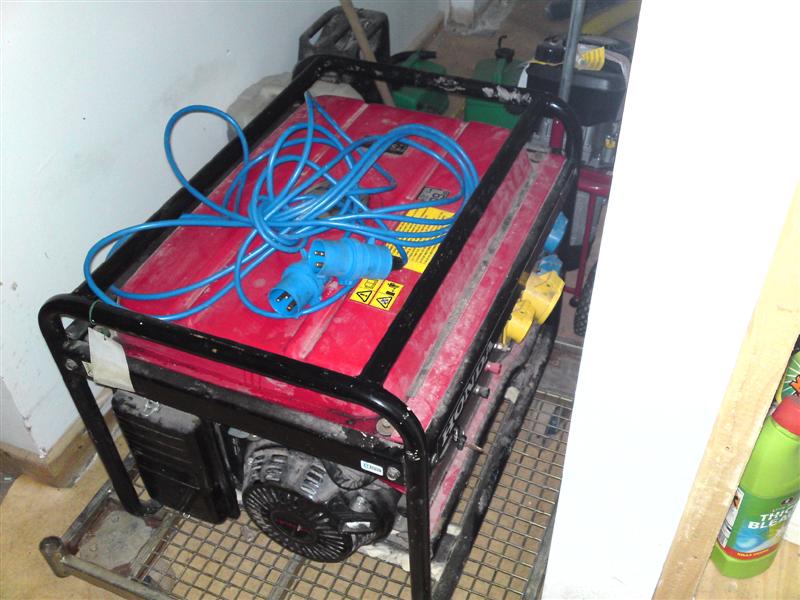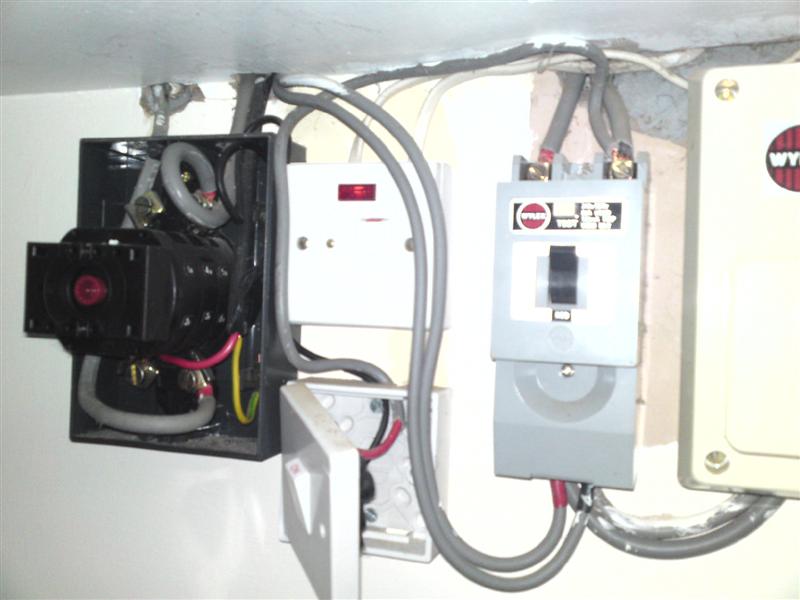OK, an update ... prepare for "slap forehead with palms" moments ...
Got a phone call from customer when the power went off. They can't get the site running off the neighbour's genny - as soon as they connect, "it trips". Don't know more than that rather non-techincal description. In any case, it's not our problem and they've already called the spark back.
Cue remote shutting down of their servers before the UPS batteries expire, and me popping home to collect genny (again) - no chance of getting there before batteries run out. As it happens, by the time I get there, the power has been on for a few minutes - so all I have to do is press a few buttons to start stuff up again and hang around in case anything fails to come up properly (I did have some other stuff to do on-site).
Anyway, I had a wander across to see whats-what - mostly to see where the two cables from the socket went to, answer being into one plug at the genny end. Guess there weren't enough cores in one cable - remember that snippet.
Next door (the ones with the genny) have another trailing lead off the genny, with a separate single core trailing alongside it - guess they were a core short. And the end of the cable has, ta-da, a plug plugged into a red socket

One of their guys was there and we got chatting, though he didn't seem that technical. His side of the story went something like :
"We've never had any problem before, we just open the main switch and fire this up. It's only when we connected next door. Our machines don't use a neutral so it's not connected in the cables. All the breakers in the board are 3 pole, so we've never bothered, we pick the neutral up from the substation. We've added the neutrals to the cables, and dropped the neutral out of our board and it's all running now."
Now, these are quite modern industrial units, so I can't see them having dodgy electrics where the main switch doesn't isolate the neutral. So they've been running their office with a floating neutral, guess they've just been lucky ! But I can't see why that would make the genny trip when next door was connected (also without a neutral at first).
Anyone want to speculate what was going on - apart from the widowmaker and 4 core power leads with 5 pin plugs and sockets ? As far as I could tell from what people said, it was something at the genny end tripping, but don't know what.




